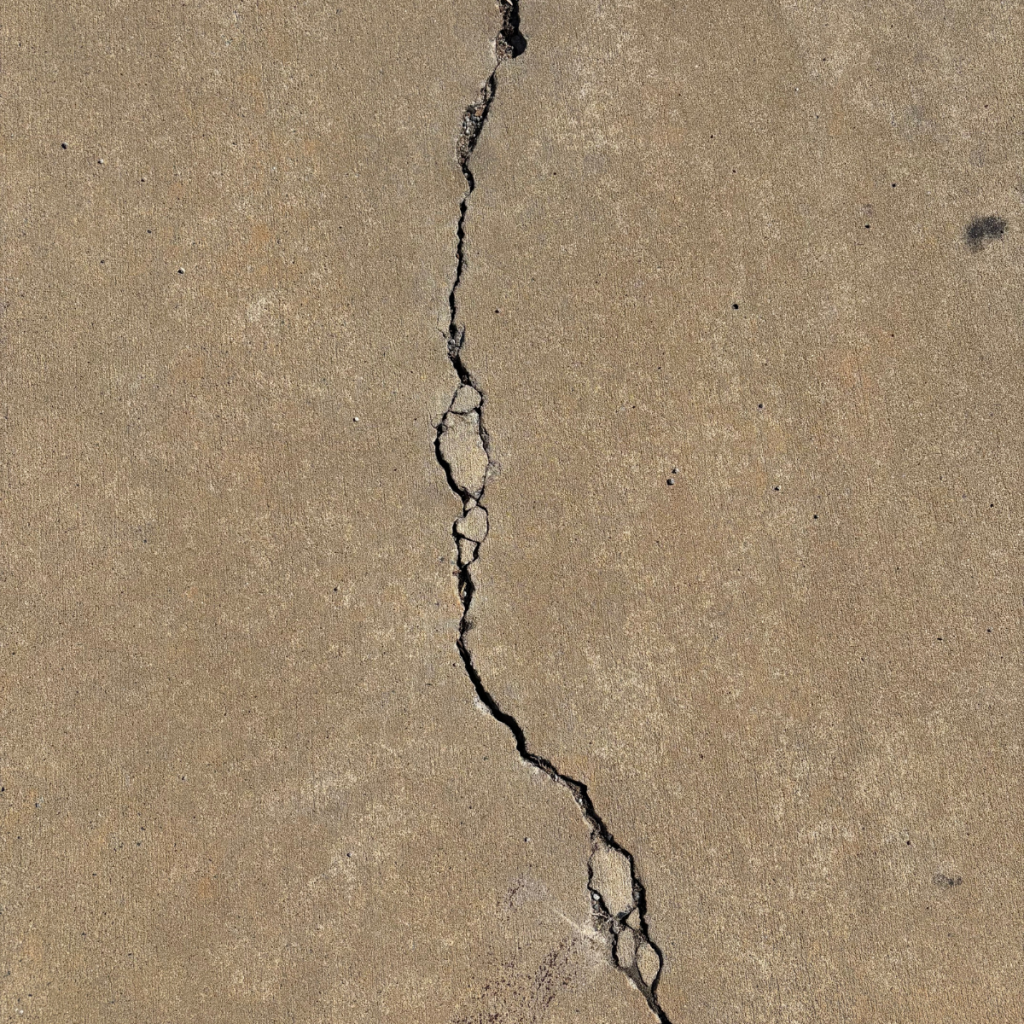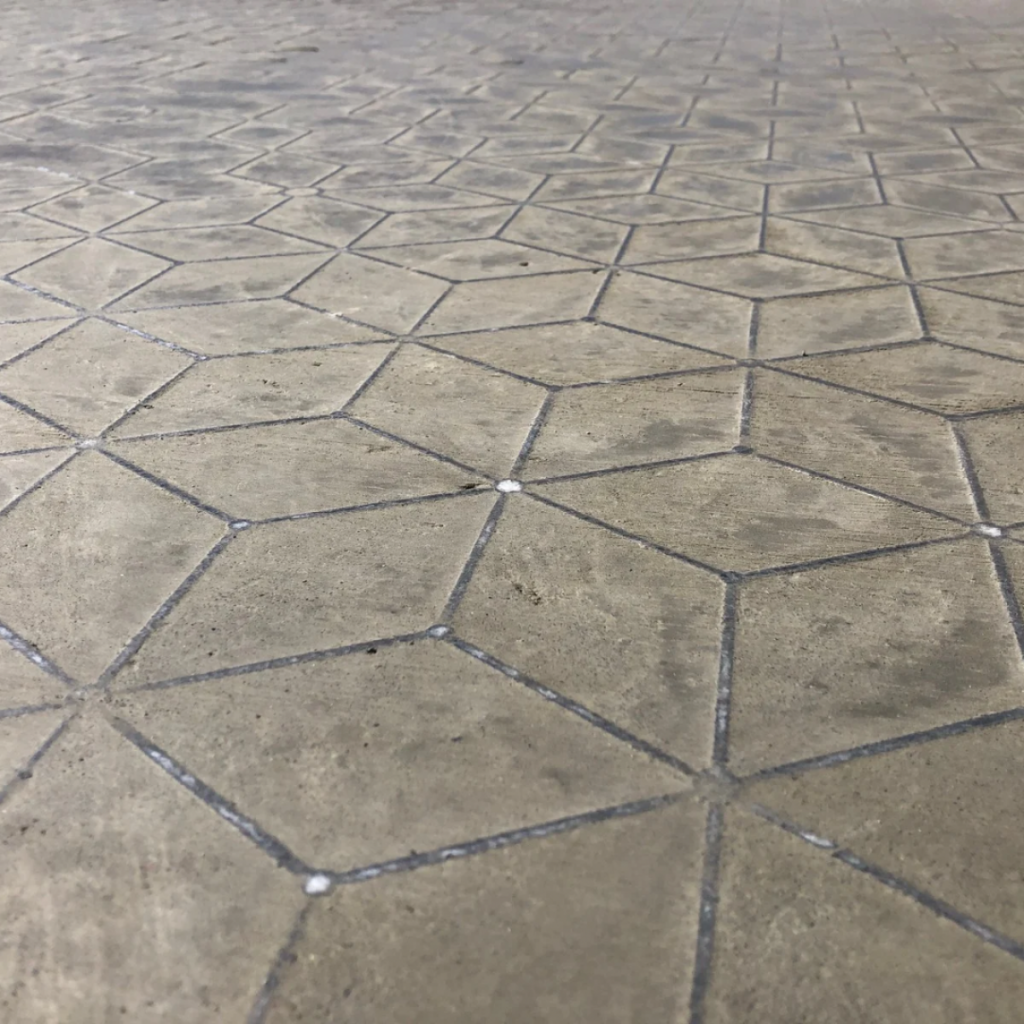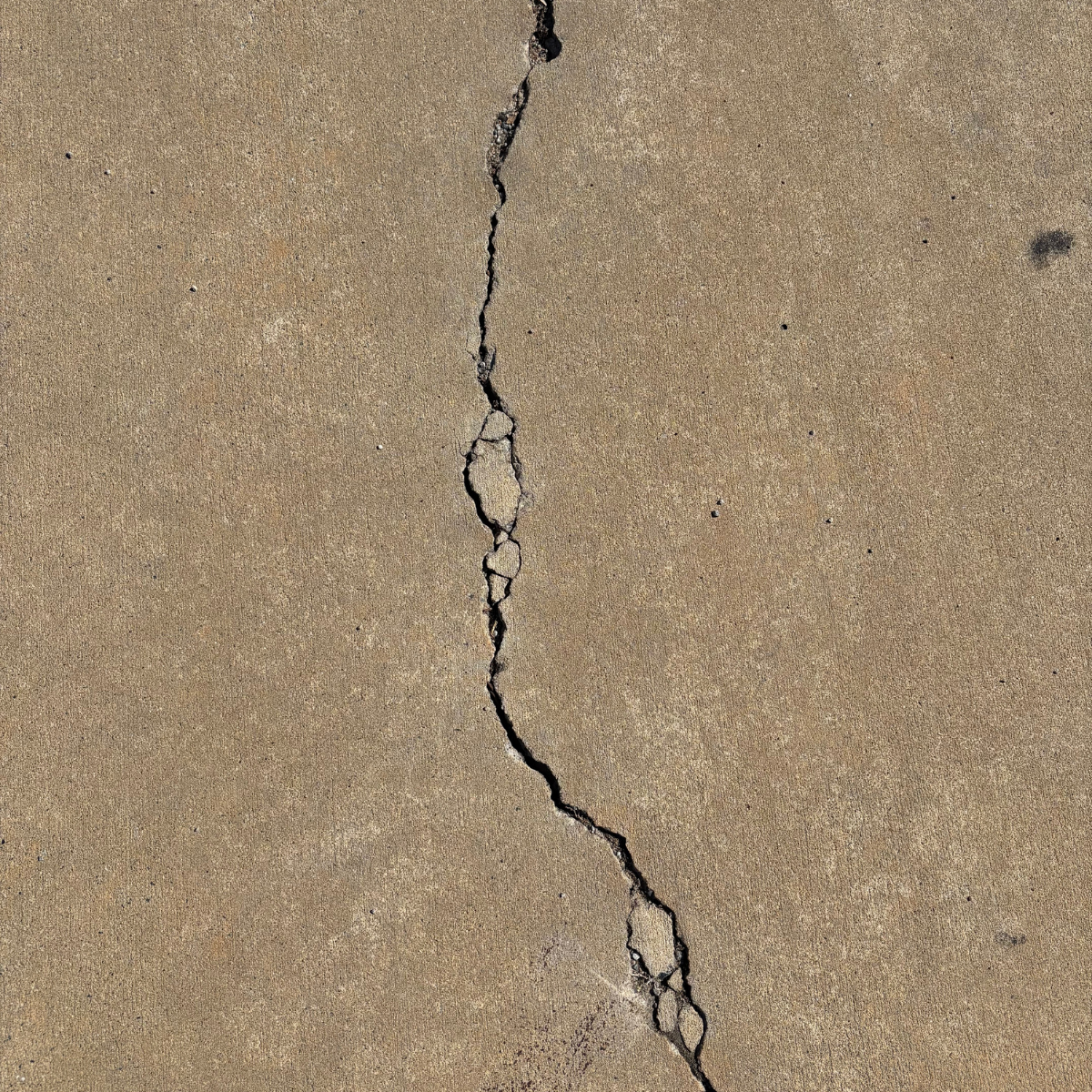Cracking is one of the most common issues seen in concrete driveways, paths, and hardstands even when they’ve been poured correctly.
To understand why it happens, you need to know one thing about concrete: it’s strong in compression, but weak in tension.
That means while it can carry heavy loads, it doesn’t handle movement, heat, or uneven support very well. Over time, those stresses add up and cracks appear.

Here are the three most common reasons your slab might be cracking, and how Rombus is designed differently to stop those same problems before they start.
1. Ground Movement and Poor Subgrade
Concrete slabs are only as good as the ground beneath them.
If the soil expands, contracts, or settles unevenly, the slab above it is forced to bend. Something it’s not designed to do. This is especially common in areas with reactive clay or poorly compacted fill.
Traditional slabs try to control this with reinforcement mesh or rebar, but once the soil moves enough, those cracks still form.
Rombus’ Advantage:
Instead of fighting movement, Rombus absorbs it.
Its interlocking modular design allows small amounts of flex and redistribution of load across each tile. So even if the ground shifts slightly, the pavement stays intact without cracking or lifting.
2. Thermal Expansion and Heat Stress
Concrete expands when it’s hot and contracts when it’s cold.
In large slabs, like driveways or commercial yards, this daily cycle creates internal stress that builds up at weak points. Expansion joints help, but they only direct the cracks, not prevent them.
Western Australia’s high temperatures can make this worse. Direct sun exposure heats the surface rapidly, while the sub-base stays cooler, leading to thermal gradients that cause curling and surface cracking.
Rombus’ Advantage:
The Rombus system’s thin (≈40 mm), interlocking modular layout helps reduce thermal stress. Each panel can absorb small amounts of movement from heat expansion and ground shift, distributing tension across the grid instead of concentrating it.

3. Shrinkage During Curing
Cracks don’t always appear months later, some start forming as the concrete dries.
When water evaporates from the mix during curing, the concrete shrinks. If that shrinkage is uneven or restrained by rebar, formwork, or friction with the base, it pulls itself apart.
Common causes include:
- Pouring in hot, windy conditions
- Inadequate moisture retention during curing
- Excess water in the mix
Rombus’ Advantage:
Rombus is installed as pre-cured modular panels, so there’s no on site drying or curing shrinkage to worry about. It removes one of the biggest variables that lead to early age cracking and ensures a consistent, high quality finish every time.
The Bottom Line
Cracks are a symptom of rigid design, not poor workmanship.
Traditional slabs simply aren’t built to handle constant ground movement, temperature shifts, and curing stresses especially in the harsh Australian climate.
Rombus rethinks the system entirely:
- Flexible, interlocking panels that move with the ground
- Thin, high-strength composite structure (around 4 cm thick)
- Faster installation and cleaner finish
By absorbing rather than resisting stress, Rombus delivers long term durability where concrete typically fails.
Learn More About the Rombus System
If you’re dealing with recurring cracking, or planning a new hardstand or driveway, it might be time to step away from traditional concrete.
See how Rombus’ flexible concrete technology performs under real world loads even an 800-horsepower drift car without a single crack.
